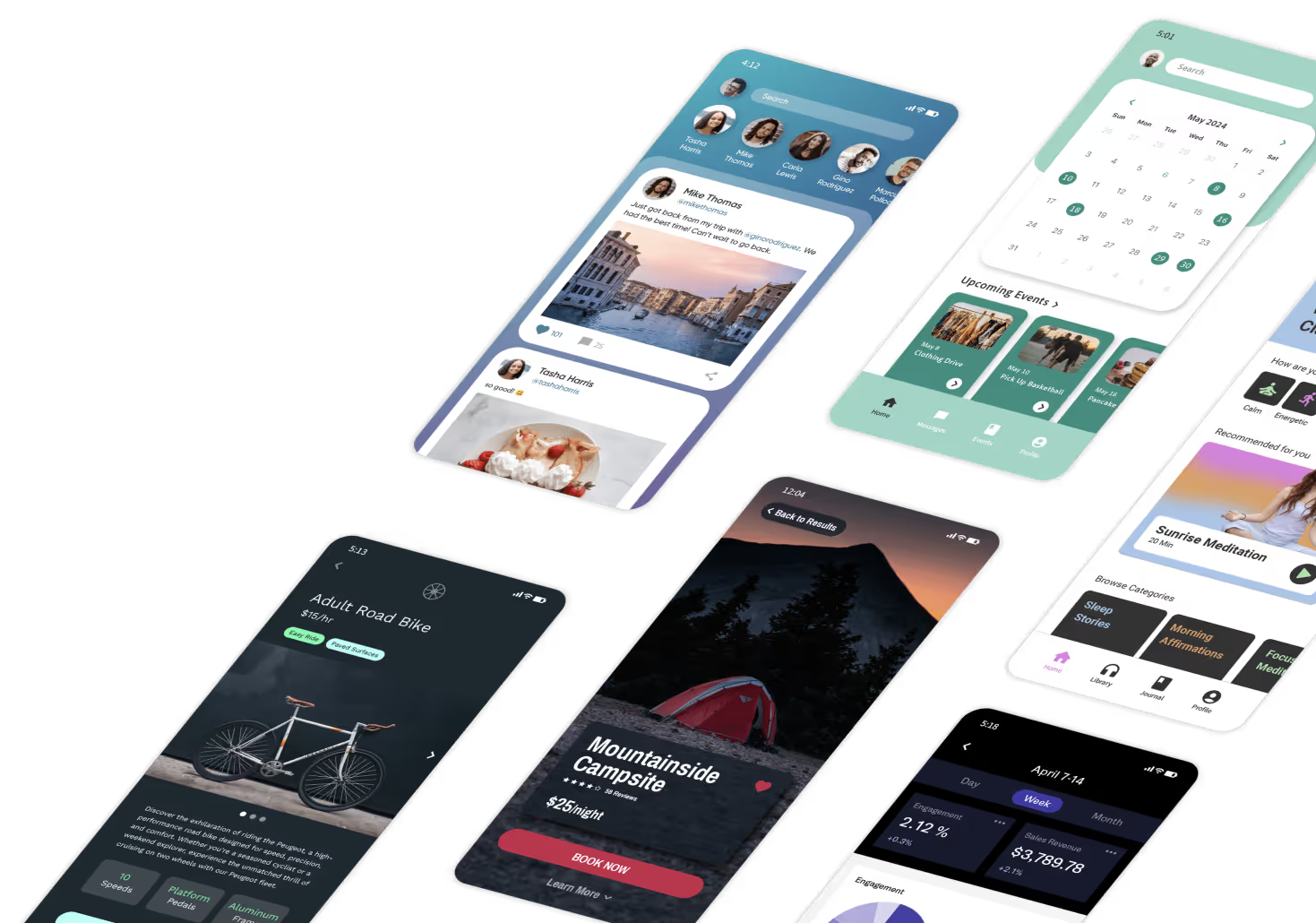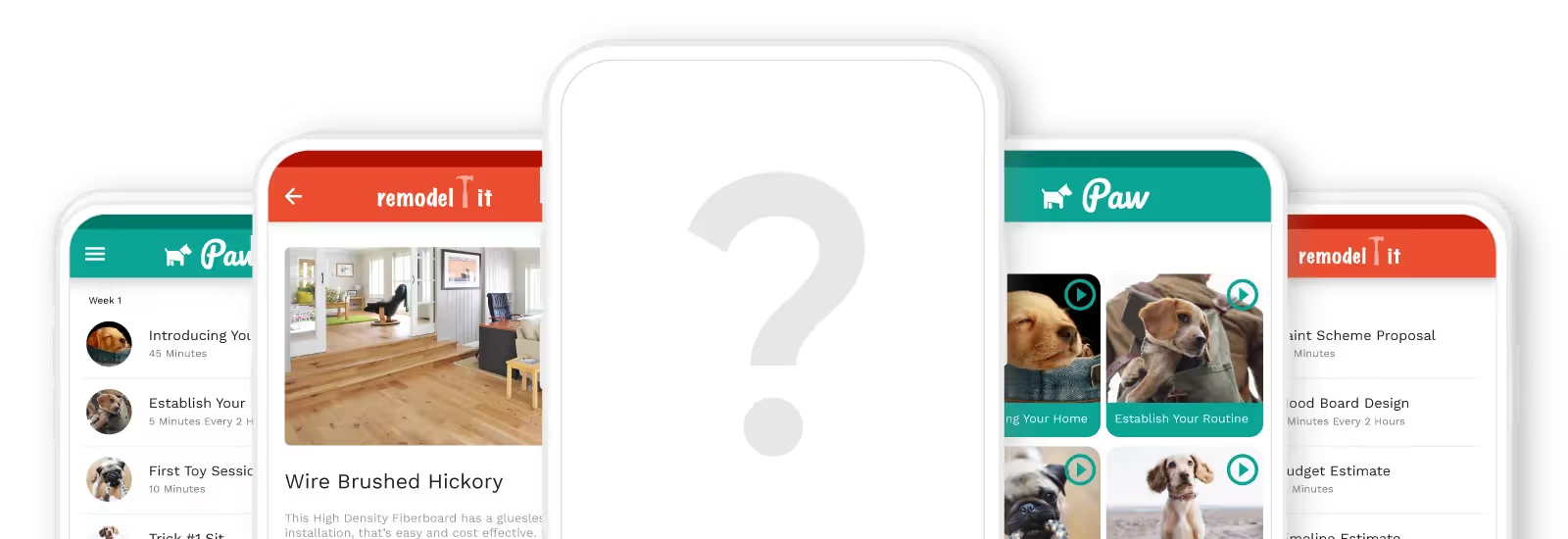Have you ever built an app for a client, completed the wireframes, put together a mockup or the actual design – only to receive ambiguous feedback like, “Can you make it pop more?”
This can often be frustrating for a mobile app development agency, particularly for whoever is working on the design of the app. Vague feedback makes it harder for creative professionals to do a good job, especially if they don’t understand what the client is trying to communicate.
The good news is that you can streamline the design feedback process and make it easier to collaborate with your client – everyone’s happy when instructions are clear and expectations are met (or better yet, exceeded!)

But let’s back up a bit – as a mobile app designer or a creative professional in general, you’re probably familiar with the design process. It’s your work day in and day out – you don’t think a whole lot about it, you just function in it automatically! It’s like driving to work. You grab your keys, get into the car, you know exactly where to turn and which exit to take, you have a parking spot near the entrance and you park there by default, and boom, without any effort, you’re at work!
But what if you had never been to this office before? What if you didn’t know what it looked like at all? You’d probably need a GPS or maps route telling you what to do and where to go at every step. That’s exactly what your client needs when it comes to giving you feedback.
So if you’re a frustrated designer at a mobile app development agency, or if you looking to make one of the annoying parts of your job a little more pleasant – this blog will help you get constructive feedback from your clients.

Tip 1: Build a Structure For Feedback
You can, and SHOULD, give your clients the tools to give you actionable feedback. If you take ownership of the feedback process and create a framework that works for you, it’s likely that you’ll be able to decode what your client actually wants, and deliver it!
Using the GPS reference from earlier, it’s likely that your client doesn’t know what your design framework looks like, or how your creative process works. They just know where they’d like to go – the destination, not the route. They’re hiring you to help them get there, and they trust you to steer the car.
So how can you help a client manage a situation where they’re in charge but someone else is in the driver’s seat? Build a structure around feedback. As a rule of thumb, the less familiar your client is with the design process, the more structure you’ll need to provide.
Here are some handy ways to collect constructive feedback:
- Provide a sheet or template where they can provide overall feedback, and screen-specific feedback
- Provide guidelines around what feedback is needed at which stage – e.g. “I’d like your feedback on the designs and colors this week, and next week we’ll review the user flow”
- You can choose a project management tool to track this communication and simplify the process

Tip 2: Build a Relationship With Your Client
Everyone is unique! The way they communicate, perceive information, and process it may be very different from you, or previous clients that you’ve worked with. By taking the time to get to know your client and build a relationship with them, you will have an invaluable insight into how to work effectively with them.
In particular, pay attention to how extensive their knowledge is on design and design processes. Find out whether they prefer being assertive in their communication or they tend to be more deferrential in their feedback. See if you can get a sense of their aesthetic preferences by understanding their interests, and what they consider ‘well designed’ apps or websites.
All of this information can be used to tailor your processes and understand your client better – apart from the fact that you’ll just build a stronger relationship with your client, which has a number of other benefits.

Tip 3: Build a Picture That Helps Visualization
It’s hard to convey what’s in your head to someone – you may be convinced that it makes sense, but someone else may just not see it. So how do you make sure that your client is “seeing what you're seeing”?
Most creative people think in images, it’s something that comes naturally. If you’re a designer, you probably processes everything visually. However, a more analytical person may instead need clear, verbal understanding.
So to help them understand what you are trying to communicate verbally, try using visual resources like drawings, mockups, or pictures. Keep these handy before a meeting so that you aren’t struggling to communicate when the time comes! It seems like more effort, but these small steps will go a long way in helping your client visualize what it is that you’re trying to build.
If you don’t share visual references, miscommunications can take place, even if your client has a great capacity to visualize concepts in their mind. If you build pictures and images, you can make sure that they’re “seeing what you’re seeing.”

Tip 4: Build an Understanding of What They MEAN
It’s not just about feedback – collecting the right feedback makes all the difference. But you don’t need to be a psychic or a mind reader to get there!
The fact remains that your clients know more about their business needs than you do, and their feedback can actually help turn your design and app into a gamechanger. What your client doesn’t know is how to translate that knowledge into an app themselves – so that’s where you come in.
A good rule of thumb to follow here is to focus on the why instead of the what. E.g. the what may be: This button doesn’t pop. The why may be significantly more important, like if users miss this button, they may exit the flow entirely. Or if you hear the infamous ‘can we make the logo bigger?’, instead you can ask them if they have concerns about branding or brand recognition over all, and see how that can best be addressed (even if it means making the logo bigger!)
So focus on trying to understand what your client might mean when they are providing feedback. Aim to solve problems for them, which is a hallmark of good design.

Tip 5: Build Trust in Their Intentions
This simply means to assume that your client is coming from a place of wanting a positive interaction, and is not harboring any malicious intent. This may sound easy, but because feedback can be a touchy subject, it’s often not as easy as we’d like it to be.
There are times when anyone working at a mobile app development agency feels like their client is trying to make life harder for them just for the heck of it. Dispel that thought right away – banish it! It won’t help you build trust in your client, and will put you on the defense every time you sit to gather feedback.
What happens more often than you realize is that clients may be worried about the success of their app, and they may project these worries or anxieties onto you. “Will this app design work? Will people like it? Does this even make sense?” These aren’t a reflection of you, or your ability to deliver as a designer.
When you’ve built a relationship with your client and see them as a partner, you may feel more compassionately and empathetically towards these concerns.
We hope these tips help your mobile app development agency work effectively and build products that solve problems and make the world a better place.
Visit the Adalo App Academy to learn more about building a successful no-code mobile app development agency.
Happy feedback gathering!














